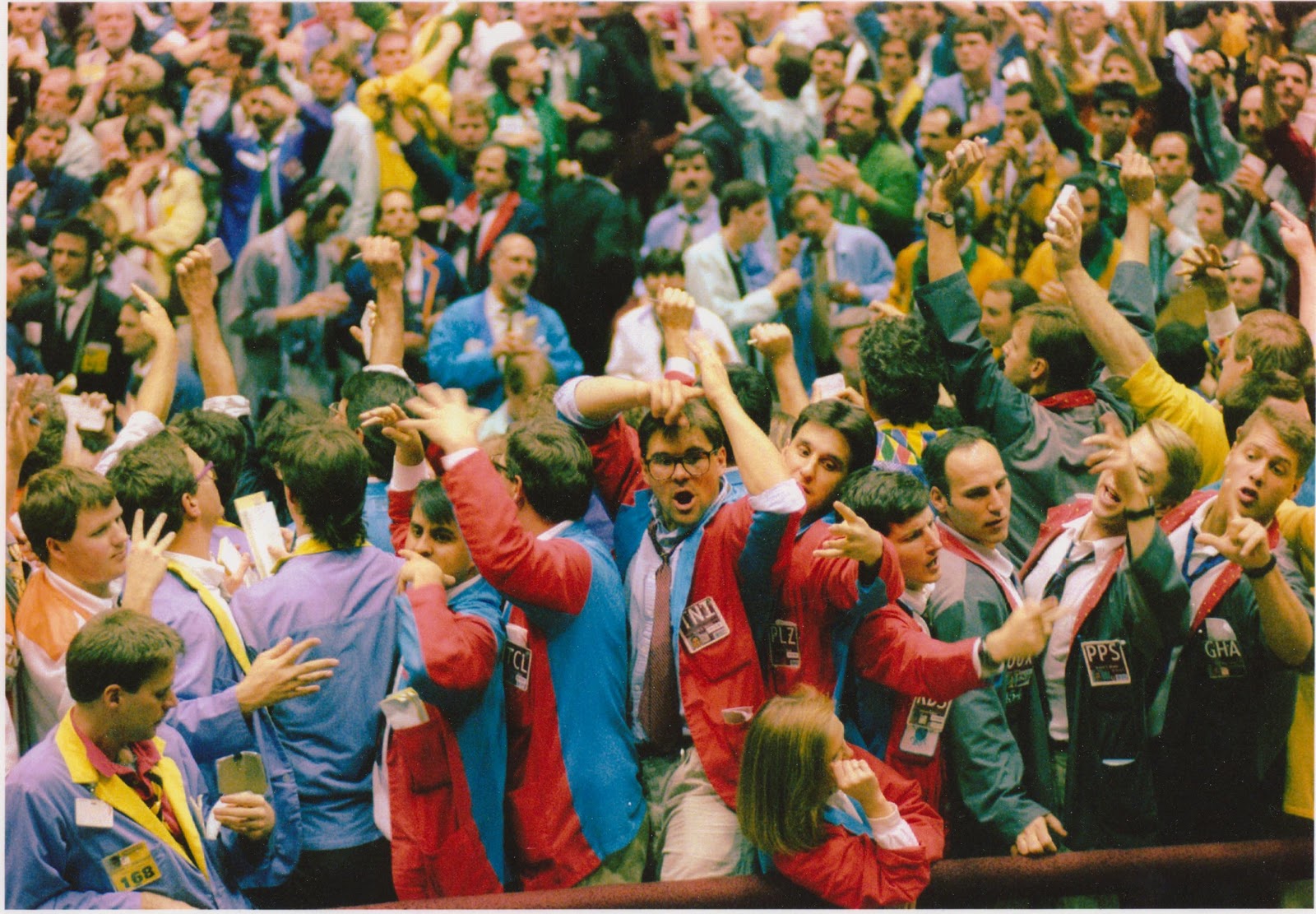The commodity markets were designed for commodity producers and commodity end line consumers to limit the volatility and risk in their business models. Producers are only willing to keep producing when they can sell their production at a profit and end line commodity processors are only willing to buy them if they can realize a profit upon selling the goods they’ve finished. The creation of commodity trading floors provided a singular location for these transactions to be recorded along standardized times and qualities. Unfortunately, commodity producers only want to sell at high prices and commodity consumers only want to buy at low prices. This created the market makers, floor traders and speculator categories that have come into the markets to provide liquidity by providing bids and offers in between the producers and end users. This week, we focus on the creation of the commodity indexes and Exchange Traded Funds created by the banking sector and what effect the current period of low volatility and declining prices is having on the very banks that created them.
The evolution of the markets created an expanding network of commodity related jobs via the personnel required to run the trading firms and direct the standardization of commodity contracts, storage and processing. The off exchange businesses like the storage, shipping and financing sectors had always been seen as ancillary to the primary purpose of ensuring raw material availability to the end line users. Following the tragic events of September 11th the U.S. Federal Reserve board began adopting easier financing terms to just about anyone. The cheap money made it more favorable to borrow the money and build a commodity storage facility to either fill yourself or to rent space as storage for others. This process was partially responsible for the commodity rally of 2008. The ensuing 6 years of sideways to lower price action coupled with forecasts of growing supplies on the horizon has crashed the profitability of this model and is now contributing to the commodity slump just as it did the price spike of ’08.
The two commodity sectors that took the most heat during this period were the grain and energy markets. Food and fuel, life is sometimes that simple. These are also some of the easiest markets in which to hoard the physical commodity itself. The large commodity companies like, ADM, Cargill and Monsanto took a ton of heat from the public at large for what was essentially, business as normal (albeit at higher prices) practices. However, the JP Morgan’s, Deutsche Bank, UBS, Morgan Stanley, Barclay’s etc used their banking experience to tap into the commodity revenue stream. Originally, they participated indirectly through a practice of swapping physical for future risk of the underlying commodity and acting as the middlemen in the brokerage process. Many of these firms took it to the next level as they became involved in physically holding and distributing commodities across the globe as the start up financing became a negligible cost of doing physical business in a Zero interest rate world.
The wild volatility, cheap interest rates and generally high commodity prices attracted more players than ever into the commodity markets. It became the party no one wanted to miss. It appears as though its last call for many of these late comers and they’re quickly scrambling out the door as the lack of inflation, lower commodity prices in general and increased regulation suck the profitability out of this once low hanging fruit. Currently, Barclays, Deutsche Bank, Chase and Bank of America are all curtailing their commodity interests or exiting the sector completely amidst tougher regulations and slow, declining markets. According to Bloomberg, commodity related profit for the top ten banks in 2013 was around $4.5 billion compared to the high water mark of $14.1 billion in 2008.
We’ve posted several charts to illustrate this point as well as the true commercial traders’ effectiveness in trading in the current climate. The commodity markets are returning to their previous mode of trading which should benefit the true commodity traders quite a bit and leave the exiting banks with time to lick their wounds before they miss the next big rally in the commodity markets.

These signals come via nightly email at COTSignals.

Signup for a FREE 30-Day trial.

Want to see more Recent Trades?


COT Signals FREE TRIAL.

One of the primary business models the banking sector introduced to commodities was the ETF (Exchange Traded Fund). ETF’s like COW (Cattle) and OIL (Oil) were designed to keep banking clients within the firm rather than letting them participate directly in the commodity markets through a commodity broker of the customers’ own choosing. More specifically, the banking sector created non margined, long only index funds that customers assumed would behave like the commodity they were built to track. Not only do most of these funds fail to track their underlying counterparts all that closely but they block the customer from the two primary advantages of exchange traded futures. First of all, commodity futures utilize margin. This allows a market participant to put up a fraction of the face value of the contract while using their excess cash as operating currency. Secondly, the ETF’s do not allow short positions, which effectively eliminate 50% of the opportunities to profit. The end result is that the banks place margin with the exchange while lending out the customers’ excess reserves. Finally, the bank takes the other side of the clients’ trades creating the bank’s own short position as the market falls and clients exit the market.
I apologize for the long-winded and basic nature of the opening but it’s must have background to discuss the current state of the markets. Referring back to the six charts we’ve posted you can see a general cross section of the economy as a whole. We’ve posted crude oil, copper, soybeans, corn, gold and 10-year Treasury Notes which have all traded sideways to lower and done so with a general steadiness and absence of chop. These are the charts that the news is referring to when it talks about the, “decline in commodity volatility.” Furthermore, their declining prices have cut the profit potential of the storage facilities bought or built by the big banks. All and all, the markets fairly orderly and deflationary trading has ruined many of the big banks’ commodity business models.
Our business is commodity trading. It started more than 150 years ago when the first Waldock’s came over from Herfordshire, England as hog farmers. Our trading philosophy has always been an attempt to ascertain the true value of something using whatever tools were made available to us at the time. My grandfather used to tour the country East of the Mississippi with a briefcase full of cash and a gigantic pistol (at least it was gigantic as a kid) and conducted each of his buys in person. My father used ticker tape and hotlines to establish prices across different regions of the country. Now, I use the Commitment of Traders Reports along with a neural network to determine not only the size of the commercial traders’ actions but also their eagerness to act at given price levels.
This brings us to the recent sell-off in commodity prices and the exiting of the commodity markets by many of the world’s largest banks. Referring to back to the charts, commercial trader momentum is the bottom histogram. Red is negative and blue is positive. It’s clear that the major market sell-off is placing these markets within the value area of commercial long hedgers. The typical pattern is for commercial long hedgers to continue to buy as the raw material input costs fall to expand the profitability of future finished goods production. Looking at the charts tells us that refiners are stocking up on crude oil below $98 per barrel, soybeans and corn below $12 and $4.50 per bushel respectively and copper below $3.15 per pound and finally gold below $1,300 per ounce. The decline in prices coupled with a corresponding decline in volatility across multiple sectors – grains, basic materials, precious metals and energy paints a very solid picture of range bound markets for the expected future.
These types of range bound, ebb and flow type markets that are increasingly absent of index and speculative trading respond exceptionally well to the negative feedback model that commercial traders typically employ. This means that the farther out of balance a market falls, the more the commercial hedger (long or short) will add to their position as they make appropriate production estimates of their firm into the future at the market’s new price levels. This can clearly be seen on the charts as short-term market movement continues to press the market in one direction; you can see the commercial position grow in a nearly equal and definitely opposite direction. This is also called, “mean reversion trading.” The market’s rallies are sold and declines are bought based on the anticipation that the market will return to recent levels to provide us with a profit.
The commodity market decline in price and volatility had to occur simply because the legislation of easy money forced the market to find a loophole to exploit for excess returns. That loophole became the swaps, storage and distribution possibilities in the commodity sector. In many ways, the general business of the last ten years has been very similar to one long trend trade. Those who were in early obviously had the greatest ability to profit, meanwhile, those who stayed late find themselves competing for profits at the expense of declining margins and increasing regulation, not to mention higher interest rates on the horizon. I’m proud of the value based trading style we’ve developed over the years and grateful for the ancestry that has always taught me that the market is always right.






